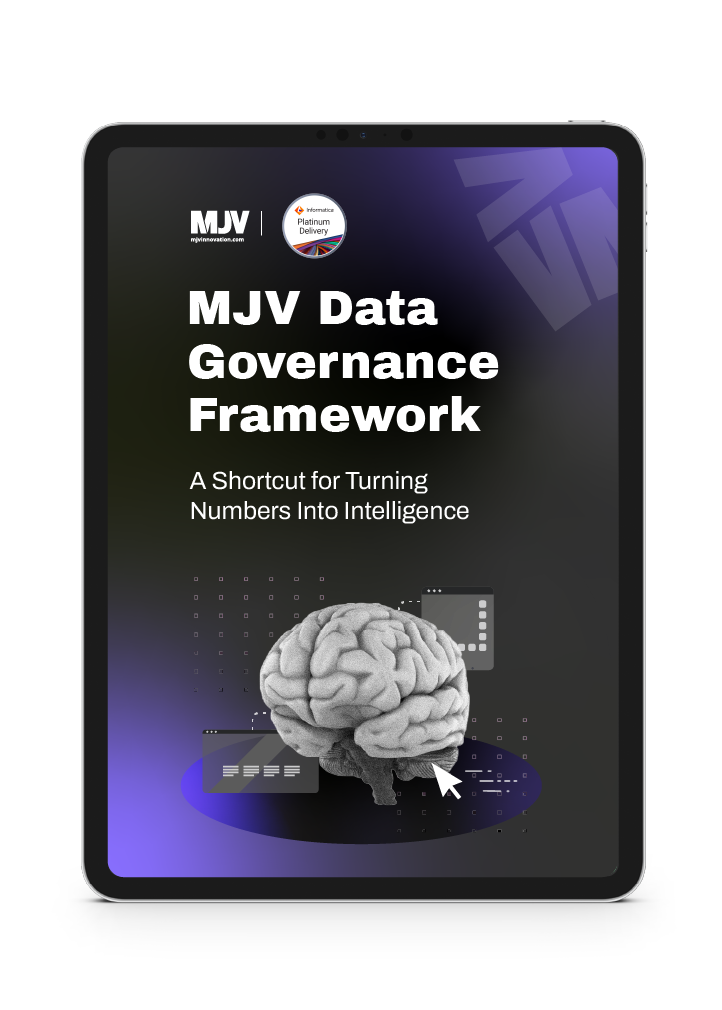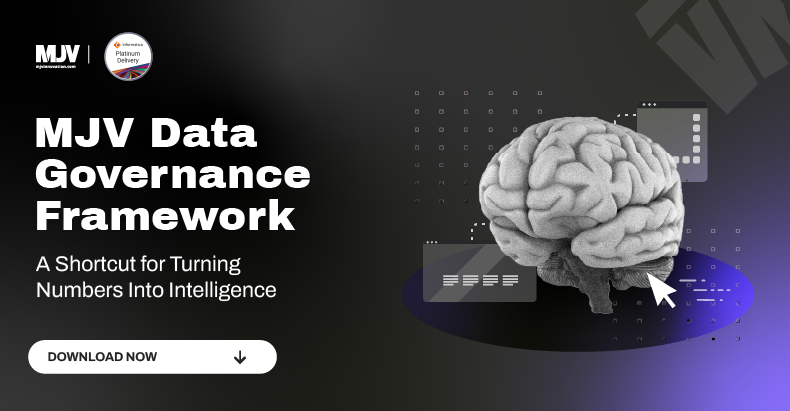Data Modernization ROI Explained: The Definitive Guide To Modernizing Your Legacy Systems
Data modernization can deliver an immediate return on investment by preparing your organization to address emerging challenges, embrace new technologies, and achieve new levels of productivity.
In today’s business landscape, data is the lifeblood of enterprises, driving decision-making, innovation, and competitive advantage. As technology evolves at an unprecedented rate, organizations are faced with the critical question of how to effectively harness the power of their data effectively.
As a result, organizations are devoting a significant portion of their IT budgets to updating their data centers by modernizing outdated software and applications. With the volume of data generated by business interactions set to skyrocket in the coming years, companies are quickly discovering that data modernization works better when it’s an ongoing process rather than a one-time event.
This article delves deep into the realm of data modernization, exploring various aspects that define it. If you’re eager to unlock the potential of your data infrastructure, read on for insights and inspiration on how data modernization can elevate your organization to new heights.
Data Modernization Quickstart: What It Is?
Data modernization is not just a buzzword—it’s a strategic imperative. In a nutshell, data modernization is the process of upgrading a company’s data stack or legacy systems to more modern technologies.
While this might seem simple and straightforward to many, large companies have systems and processes that date back decades and are stubbornly ingrained into the business’s technology architecture.
Removing old legacy systems to make room for modern tech can be a long journey, so let’s begin by understanding the current state of the data modernization market in the United States.
Research shows that modernizing legacy data architecture can deliver up to a 180% ROI within 3 years.
The Landscape in the U.S.
The United States is a hotbed for data modernization initiatives, with businesses of all sizes recognizing the need to evolve their data strategies. Major players in the data modernization market include tech giants like Microsoft, IBM, and Amazon Web Services (AWS), offering a range of products to meet diverse data needs.
According to industry reports, the data modernization market is expected to grow at a compound annual growth rate (CAGR) of 16.7% over the next five years, underscoring its critical importance.
Growth Expectations
The exponential growth of data, coupled with the increasing complexity of data sources, is a driving force behind the urgency to modernize data infrastructure. Organizations that adapt swiftly are better positioned to make informed decisions, enhance customer experiences, and gain a competitive edge.
The Best Practices

Data modernization works better when it’s an ongoing process. Don’t wait until your data stack turns into software from the ’00s. Download our e-book to learn how to modernize your legacy systems.
The Benefits of Data Modernization
Now that we’ve laid the groundwork, let’s explore the myriad benefits that data modernization brings to the table. To illustrate these advantages, we’ll share real-world success stories from companies that have embarked on their data modernization journeys.
- Improved Decision-Making
- Enhanced Customer Experience
- Cost Optimization
- Agility and Innovation
- Compliance and Risk Management
1. Improved Decision-Making
Modernized data systems provide real-time insights, enabling organizations to make data-driven decisions swiftly. Take the case of Netflix, which has undergone a significant data modernization process.
By analyzing viewer behavior and content preferences, Netflix can recommend personalized content to its users, resulting in increased viewer engagement and longer subscription durations.


2. Enhanced Customer Experience
In today’s customer-centric landscape, personalization is key. Amazon, a pioneer in data-driven customer experiences, leverages data modernization to analyze customer interactions and preferences.
By tailoring their online shopping recommendations, Amazon has achieved a high level of customer satisfaction and loyalty, translating into significant revenue growth.
3. Cost Optimization
Data modernization often involves migrating to cloud-based storage, which offers scalability and cost savings.
Salesforce, a leader in customer relationship management (CRM), adopted a data modernization strategy that included cloud migration. This move allowed Salesforce to efficiently scale its infrastructure based on customer demand, optimizing costs while maintaining high-performance levels.


4. Agility and Innovation
Companies that embrace data modernization are better equipped to innovate.
Tesla, a trailblazer in the automotive industry, revamped its data analytics processes. This change enabled them to develop advanced driver-assistance systems and autonomous driving features, setting new industry standards and gaining a competitive advantage.
5. Compliance and Risk Management
Data modernization ensures compliance with data protection regulations, reducing the risk of costly fines.
Capital One, a major financial institution, implemented stringent data governance practices and robust security measures to protect customer data. This proactive approach not only ensured compliance with industry regulations but also safeguarded the bank’s reputation.

What’s the Role of Cloud Computing in Data Modernization?
Cloud computing plays a pivotal role in the data modernization journey. It offers a scalable and flexible infrastructure that aligns seamlessly with the evolving data needs of organizations. Here’s a closer look at how cloud computing and data modernization are intertwined.
Cloud Migration
One of the initial steps in data modernization is migrating physical data repositories to the cloud. General Electric (GE), a global conglomerate, embarked on a comprehensive data modernization journey that included cloud migration. This move allowed GE to centralize its data, improve accessibility, and reduce infrastructure costs across its diverse business units.
Data Storage and Scalability
Cloud providers offer vast storage options, ensuring organizations can securely store and manage their data. Dropbox, a cloud-based file storage company, leveraged cloud storage to accommodate its growing user base while maintaining data security and accessibility.
Data Analytics and Processing
Cloud platforms provide powerful tools for data analytics and processing. Airbnb, a leading online hospitality marketplace, utilizes cloud-based analytics to gain insights into user behavior and preferences. This data-driven approach allows Airbnb to continually optimize its platform, enhancing user experiences and business performance.
Flexibility and Agility
Cloud computing allows organizations to adapt to changing business conditions rapidly. Uber, a pioneer in the ride-sharing industry, relies on cloud-based infrastructure to handle dynamic demand for its services. This flexibility enables Uber to scale resources seamlessly, ensuring optimal service levels.
Cost Management
Cloud services operate on a pay-as-you-go model, allowing organizations to control costs effectively. Spotify, a music streaming service, relies on cloud infrastructure to deliver music to millions of users worldwide. This cost-effective approach allows Spotify to offer competitive pricing to its customers while efficiently managing its infrastructure costs.
Modern Data Companies: Two Stories of Transformation
Let’s delve into two compelling stories of companies that embarked on data modernization journeys and are now reaping the rewards—one from the retail sector and another from the financial services industry.
Retail Revolution: Walmart
Walmart, the world’s largest retail corporation, serves as a prime example of how data modernization can transform an industry giant. Walmart recognized the necessity of adapting to the fast-evolving retail landscape and embarked on an ambitious data modernization journey that reshaped its business operations and improved customer experiences.
Data Integration for Enhanced Customer Insights
Walmart’s data modernization journey began with the integration of diverse data sources, including in-store and online sales data, supply chain information, and customer interactions. This comprehensive data integration allowed Walmart to create a holistic view of each customer’s shopping journey, enabling the retailer to offer tailored product recommendations and personalized marketing campaigns.
By gaining real-time insights into customer behavior, Walmart improved its ability to forecast demand accurately, leading to a notable reduction in out-of-stock instances and a substantial boost in customer satisfaction.
E-commerce Growth and Omnichannel Success
Walmart’s data modernization efforts extended to its e-commerce platform, which experienced significant growth. By leveraging data analytics and personalization, they enhanced the online shopping experience, offering tailored product recommendations and promotions.
Walmart’s omnichannel strategy allowed customers to seamlessly switch between online and in-store shopping. This approach not only met evolving customer expectations but also positioned Walmart as a formidable competitor in the e-commerce space.
Results and Continued Innovation
The impact of data modernization on Walmart’s bottom line was substantial. Online sales grew, significantly outpacing industry averages. The retailer’s commitment to data-driven decision-making and customer-centricity served as a model for the retail industry as a whole.
Walmart’s journey demonstrates the power of data modernization in driving business growth, optimizing inventory management, and enhancing customer experiences.
Financial Services Transformation: JPMorgan Chase
JPMorgan Chase, one of the largest and most influential banks in the United States, embarked on a comprehensive data modernization journey to enhance customer services, improve risk management, and drive innovation within the financial sector.
Customer-Centric Insights for Personalized Services
JPMorgan Chase prioritized customer-centricity by leveraging data to offer tailored financial services. They collected and analyzed vast amounts of data, including transaction histories, customer interactions, and feedback. Utilizing advanced data analytics and machine learning algorithms, the bank gained deep insights into individual customer behavior and preferences.
This data-driven approach enabled JPMorgan Chase to offer personalized financial advice, investment strategies, and credit solutions. For instance, the bank provided customers with customized investment portfolios based on their risk tolerance and financial goals, leading to increased customer satisfaction and loyalty.
Compliance and Risk Management
Compliance with data protection and privacy regulations was a top priority for JPMorgan Chase. The bank implemented robust data governance practices, encryption protocols, and access controls to protect sensitive customer information. These measures ensured the bank adhered to stringent data privacy regulations while safeguarding its reputation.
Innovation and New Revenue Streams
JPMorgan Chase’s data modernization journey unlocked the potential for innovation and the exploration of new revenue streams. By analyzing transaction data and customer behavior patterns, the bank identified underserved market segments and emerging financial trends.
The bank introduced innovative financial products and services tailored to these market niches. For example, they launched a digital financial advisory platform that provided customers with personalized investment recommendations. This innovation attracted a new generation of tech-savvy customers and contributed to an increase in cross-selling of financial products.
Continued Success and Industry Leadership
JPMorgan Chase’s data modernization journey positioned them at the forefront of innovation within the financial services industry. Their comprehensive approach to data modernization, encompassing customer insights, compliance, innovation, and personalized services, not only solidified their existing customer base but also attracted new customers who valued tailored financial solutions.
In conclusion, the stories of Walmart and JPMorgan Chase illustrate how data modernization can drive business growth, enhance customer experiences, and improve risk management. These real-world examples showcase the transformative power of data modernization in diverse industries and emphasize the importance of leveraging data as a strategic asset for enduring success.
Data Modernization is a Strategic Imperative
Data modernization is not a mere trend but a strategic imperative for organizations seeking to thrive in the data-driven era. The benefits of improved decision-making, enhanced customer experiences, cost optimization, agility, innovation, compliance, and risk management are tangible and transformative.
Real-world examples from companies like Netflix, Amazon, Salesforce, Tesla, Capital One, GE, Dropbox, Airbnb, Uber, and Spotify demonstrate the power of data modernization in diverse industries. But these aren’t the only cases out there. Almost every single company in operation today takes advantage of the benefits that data modernization provides.
Remember: data modernization works better when it’s an ongoing process rather than a one-time event.
These success stories underscore the importance of data as a strategic asset and the role of cloud computing in enabling data modernization. As you consider your organization’s data modernization journey, remember that it’s a continuous process, and the rewards are substantial.
To unlock the full potential of your data and stay competitive, take inspiration from these real-world examples and embark on your data modernization adventure today. If you have specific data modernization challenges or questions, don’t hesitate to reach out to our consultants for expert guidance and support.
Back

